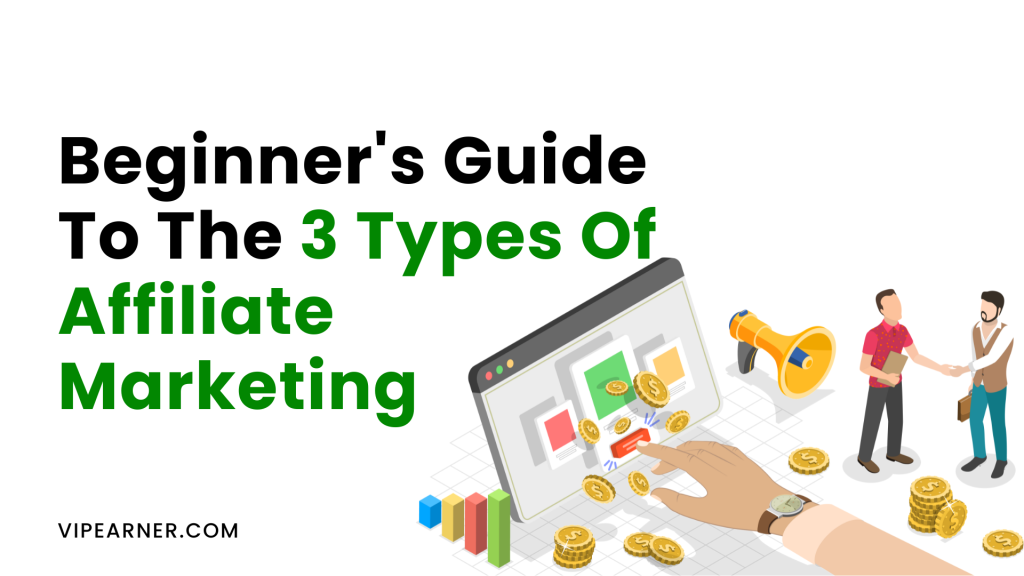AgentOps helps developers see inside their AI agents by logging every prompt, action, and cost. This review explains how it works, its features, setup, and why it’s becoming the go-to debugging tool for AI developers.
Beginner's Guide to the 3 Types of Affiliate Marketing

The landscape of affiliate marketing has evolved significantly since its early days, with strategies now emphasizing trust, authenticity, and audience-centric approaches. At its core, affiliate marketing can be categorized into three distinct models: unattached, related, and involved marketing.
Each model offers unique advantages and challenges, but the most sustainable and ethical approach—involved affiliate marketing—relies on firsthand product experience, audience trust, and strategic content creation. This report synthesizes insights from industry leaders like Pat Flynn of Smart Passive Income, Post Affiliate Pro, and Tapfiliate to outline actionable steps for building a profitable affiliate marketing strategy.
Key findings emphasize the importance of niche selection, content quality, and aligning promotions with audience needs. By prioritizing transparency and long-term relationships, marketers can transform affiliate efforts into recurring revenue streams while maintaining credibility in competitive digital spaces 4.
Unattached Affiliate Marketing: The Impersonal Approach
Unattached affiliate marketing involves promoting products without personal experience or authority in the niche. This model often relies on pay-per-click (PPC) campaigns, where marketers place ads across platforms like Google AdWords or social media to drive purchases.
While this approach requires minimal upfront investment, it struggles with scalability and trust. For example, Pat Flynn’s early experiment with PPC resulted in a $250 loss, highlighting the risks of prioritizing quick profits over audience relationships.
The primary drawback of unattached marketing is its transactional nature. Without a direct connection to the product or consumer, affiliates act as intermediaries rather than trusted advisors. This limits opportunities for recurring income and increases vulnerability to algorithm changes or ad platform policies. Despite its challenges, some marketers succeed by targeting high-volume keywords, though this demands rigorous testing and budget flexibility 4.
Related Affiliate Marketing: Leveraging Niche Authority
Related affiliate marketing bridges the gap between impersonal promotions and deep product involvement. Here, marketers promote products tangential to their niche, often through banner ads or sidebar links. For instance, finance blogs might feature affiliate links for banking tools they don’t personally use but align with their content themes. While this method leverages existing audience trust, it carries risks if products underdeliver.
Pat Flynn recalls promoting an iPhone app development course without using it himself, relying instead on his relationship with the product owner. This strategy can generate supplemental income but requires careful vetting to avoid credibility erosion. The key is balancing relevance with transparency—clearly distinguishing affiliate content from personal endorsements 5.
Involved Affiliate Marketing: The Gold Standard for Trust
Involved affiliate marketing centers on products the affiliate actively uses and recommends. This model thrives on authenticity, as seen in Pat Flynn’s partnerships with Bluehost and ConvertKit. By integrating these tools into tutorials, case studies, and podcasts, he demonstrates their value while earning recurring commissions. Involved marketing transforms affiliates into industry authorities, fostering loyalty and higher conversion rates.
A critical advantage of this approach is its alignment with audience needs. When Flynn discusses email marketing strategies using ConvertKit, his recommendations carry weight because they’re backed by firsthand success. This method also mitigates risks like chargebacks or refunds, as satisfied customers are less likely to dispute purchases.
Step 1: Niche Selection and Audience Analysis

Choosing a profitable niche requires balancing passion with market demand. Tools like Ubersuggest and Keywords Everywhere help identify low-competition keywords, such as “best email marketing tools for small businesses” or “affordable web hosting for bloggers.” Successful niches often intersect with the affiliate’s expertise, enabling authentic content creation. For example, a blogger specializing in SEO can promote keyword research tools like Ahrefs or SEMrush 5.
Audience analysis further refines niche selection. Surveys, comment sections, and social media polls reveal pain points, such as budget constraints or confusion about tech setups. Addressing these issues through targeted content builds rapport and positions the affiliate as a problem solver 4.
Step 2: Content Creation Frameworks
High-performing affiliate content combines education and persuasion. Effective formats include:
In-Depth Product Reviews
Detailed reviews should highlight features, pricing, and real-world applications. For example, a review of Bluehost could compare its uptime statistics and customer support against competitors like SiteGround. Including screenshots of backend interfaces or video walkthroughs adds credibility.
“Best Of” Roundups
Articles like “Top 5 Email Marketing Platforms for 2025” cater to readers comparing options. These posts benefit from comparison tables, star ratings, and clear affiliate disclosures. Incorporating user testimonials or case studies (e.g., “How I Grew My List by 200% with ConvertKit”) enhances relatability.
Tutorials and How-To Guides
Step-by-step guides position affiliate products as solutions. A post titled “How to Set Up Your First Funnel Using ClickFunnels” can include affiliate links to the software while teaching valuable skills. Video tutorials embedded within blogs further boost engagement and dwell time—a key SEO metric 3.
Step 3: Optimizing for Conversions
Strategic placement of affiliate links maximizes click-through rates. Best practices include:
- Contextual Links: Embed links within relevant paragraphs (e.g., “Bluehost’s one-click WordPress installation simplified my setup process”).
- Call-to-Action Buttons: Use contrasting colors for “Check Price” or “Get Discount” buttons.
- Exit-Intent Popups: Offer a free resource (e.g., “Download Our Affiliate Marketing Checklist”) in exchange for email sign-ups, nurturing leads for future promotions 5.
A/B testing different layouts using tools like Google Optimize identifies top-performing designs. For instance, placing affiliate banners above the fold might increase visibility but could distract from content—requiring a balance based on analytics 4.
Step 4: Building Long-Term Partnerships

Involved marketing thrives on partnerships with reputable brands. Negotiate higher commission tiers by demonstrating consistent sales, as Pat Flynn did with ConvertKit. Exclusive discounts for your audience (e.g., “Get 30% off your first year with code VIPEARNER”) incentivize purchases while strengthening affiliate relationships.
Regularly update content to reflect product changes, ensuring accuracy. For example, if a promoted tool launches a new feature, publish a follow-up post or video tutorial. This not only maintains relevance but also signals to search engines that the content is fresh—improving rankings 5.
Disclosure Requirements
The FTC mandates clear disclosures for affiliate content. Phrases like “This post contains affiliate links, meaning I earn a commission if you purchase through my links” must appear prominently. Avoid vague language like “partner links” or “sponsored content,” which can mislead readers 4.
Prioritizing Audience Trust
Promoting low-quality products for short-term gains jeopardizes long-term success. A 2024 Tapfiliate study found that 68% of consumers abandon affiliates after one negative experience. Mitigate this by:
- Testing products thoroughly before endorsement.
- Providing balanced reviews that acknowledge limitations (e.g., “ConvertKit’s automation features are robust but may overwhelm beginners”).
- Offering refund guides or customer support contacts for dissatisfied buyers 5.
Conclusion: The Future of Affiliate Marketing
The shift toward involved affiliate marketing reflects broader consumer demand for authenticity. As algorithms prioritize user experience metrics like dwell time and bounce rate, affiliates must focus on value-driven content. Tools like AI-powered SEO platforms and video analytics will play pivotal roles in optimizing strategies, but human trust remains irreplaceable.
For bloggers at vipearner.com, success lies in merging affiliate promotions with educational content. By adhering to ethical guidelines, leveraging data-driven insights, and nurturing audience relationships, marketers can build sustainable income streams that transcend fleeting trends. The era of impersonal PPC campaigns is fading; the future belongs to those who put their audience first 2.

